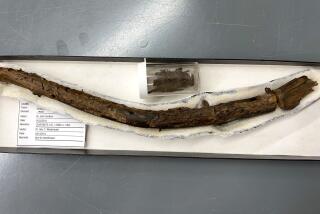Pioneering Perennials Now Available Here
These are exciting times for those who like flowers. Thanks to a phenomenal interest in flowers--perennials in particular--commercial growers have been trying all sorts of unusual plants in a search for new flowers to brighten our garden beds and borders.
Since this is the perfect time to plant perennials and most other plants (so they are completely established by spring with a minimum of watering), let me introduce you to a few of these newcomers to pique your interest.
Even if you cannot find these particular plants, they are but a sampling; when you’re out shopping for things to plant this fall, keep an eye open for the new and unusual. They will make spring all the more surprising when they flower for the first time in your garden.
These were discovered at two particularly adventuresome wholesale growers. You cannot order these directly from the growers, but can ask your nurseryman to order them for you. El Modeno Gardens sells to most nurseries. Hi Mark Nursery only sells to nurseries from about Culver City north, though Roger’s Gardens in Corona del Mar, Heard’s County Gardens in Westminster and Palos Verdes Begonia Farm are regular customers further south.
One of the best perennials to come along--the spectacular and nearly ever-blooming alstroemeria --was hard to find until very recently, but now nurseryman Jan Groot at El Modeno is growing them by the thousands, from tubers imported from Holland.
These are not the home-grown alstroemerias that have caused quite a stir in San Diego County. The plants are shorter (about 2 feet tall) and the flowers smaller, but they are still excellent as cut flowers, lasting a week or more in a vase, and bloom most of the year in the garden.
They have five varieties: two reds, two different pinks and a yellow are offered.
“Sunrise” is a new wrinkle in marguerites that came from the U.C. Irvine arboretum. It has streaked flowers that open a hot pink and fade to a softer shade. Near the center of each flower is a band of yellow.
It flowers most of the year but Jan’s son, Dana Groot, tells me they are more brightly colored in summer and the plants are more upright, tending to sprawl a little in winter. They suggest cutting them back in January or February after the first year in the ground.
Unlike other marguerites which object to any attempt at pruning, these rebound. Plants grow 2 1/2- to 3-feet tall and are 3 to 4 feet across.
El Modeno is also growing a number of salvias which are the stalwarts of the late summer and fall garden. The most interesting are the varieties of Salvia greggii, which can stand a great deal of heat, and some drought. This is actually a small shrub, growing about 3 or 4 feet around. It can be sheared, and blooms for a very long season.
They have a rosy red, bright red, one named “Furman’s Red” that is quite dark, and a white-flowered form. Inland and even desert gardeners should give this one a try.
Mark Bartholomew at Hi Mark Nursery is growing a salvia with flowers so blue it is startling, and they come at a most useful time--right now, in late summer and fall. It is Salvia azurea grandiflora and the flowers are larger than those on most salvias.
They are large enough, and numerous enough, to cause the plant to topple over, making this a very untidy perennial, but some control can be had by cutting it back severely just as it is about to flower.
It immediately bounces back, but is shorter and more manageable, with even more flowers.
Teucrium hircanicum is another late-summer bloomer with bold purple spikes and wooly green leaves that are also tinged with purple.
From a distance, it has a misty appearance, as if it were about to disappear in a purple haze. It is a perennial that grows to 2 or 3 feet across and almost as tall when in flower.
Hi Mark is also growing two perennial foxgloves with intriguing flowers. One, Digitalis laevigata , has flowers that look like gold helmets and a beard beneath that is striped gold. And, I mean gold , like the metal, not like a marigold. It makes a dense permanent clump and sends up spikes to 3 feet.
Digitalis lanata has white flowers with purple veins and a yellow throat. It, too, sends spikes to about 3 feet. Both prefer shade inland but take full sun on the coast.
From Mexico, comes a marigold that is a perennial: Tagetes lucida . It grows to about 3 feet tall and as big around, and then flowers in fall. The large golden yellow heads are made up of hundreds of tiny, tiny marigold flowers. It is commonly called Mexican tarragon for its culinary uses.
Verbena bonariensis is a cousin of one of my favorite flowers, Verbena rigida . It, too, has pure purple flowers all summer and fall, but they come atop thin but sturdy 4-foot stems so they seem to float over the garden like little purple clouds. It has the same stiff foliage at ground level. When it finishes flowering, simply cut it back and it begins again.
Adenophoras, also called ladybells, are campanula relatives and Hi Mark is growing one named Adenophora lillifolia that sends up spikes of lilac-blue bellflowers about 2 to 3 feet tall from a clump of deep green leaves. It has a definite cottage garden look.
These plants are all new enough so you will also be pioneering their culture in California. Even the growers are not sure how long they will persist in the garden, or even exactly how large they will get, but even that can be considered part of the fun of growing anything new.
One thing is certain--you will not be disappointed in their flowers.






